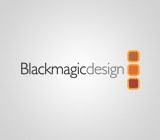|
|
Forum List
>
Café LA
>
Topic
Plasma Screens on Evening News
Posted by CyWar
|
Plasma Screens on Evening News April 12, 2009 09:17PM |
Registered: 17 years ago Posts: 115 |
Am making a training video and need to capture a Keynote presentation playing in the background on a 42" HD plasma screen behind the "news anchor" type person delivering the dialogue. who also advances the presentation slides during the dialogue. The footage I capture show the plasma screen very washed out and fuzzy, while the rest of the scene and sharp and vivid.
Any one know how they do it on the "evening news" television broadcasts? I know some of it is "green screen" but that's not what I want. There is one in particular that caught my attention on CNN of a stock market commentator using a large touch-screen. The image of the touch-screen is bright and sharp.
Any suggestions would be welcomed.
Regards, Cyrus
iMac 27" Intel i7 Quad-Core; 16GB RAM; 2TB HD
Final Cut Studio, FCP X, Photoshop CS5, After Effects, etc.
Any one know how they do it on the "evening news" television broadcasts? I know some of it is "green screen" but that's not what I want. There is one in particular that caught my attention on CNN of a stock market commentator using a large touch-screen. The image of the touch-screen is bright and sharp.
Any suggestions would be welcomed.
Regards, Cyrus
iMac 27" Intel i7 Quad-Core; 16GB RAM; 2TB HD
Final Cut Studio, FCP X, Photoshop CS5, After Effects, etc.
|
Re: Plasma Screens on Evening News April 12, 2009 09:54PM |
Moderator Registered: 17 years ago Posts: 6,730 |
No...not green screened. At the Golf Channel, we fed the monitors HDCam footage right off tape. Crisp & clean. You're not giving us enough information. There's actually no way to know that without knowing:
1. What are the specs of the Plasma you are viewing
2. What signal are you feeding it and from where
3. What are the specs of the footage you want to display
When life gives you dilemmas...make dilemmanade.

1. What are the specs of the Plasma you are viewing
2. What signal are you feeding it and from where
3. What are the specs of the footage you want to display
When life gives you dilemmas...make dilemmanade.

|
Re: Plasma Screens on Evening News April 12, 2009 10:11PM |
Registered: 17 years ago Posts: 115 |
My apologies, but you are asking questions I'm not expertise enough to answer. I have no idea what the "specs" are. That said, all I want to be able to do is video a scene (using a Sony HDR-SR1 camera) of a person talking and also the Keynote presentation playing on the 42" HD plasma screen by them. The "feed" to the plasma screen is coming from an iMac, attached as an external monitor. It is beautiful when directly viewed on the plasma HD screen, but on the video it isn't. I've tried tweaking in FCP, but to no avail there, either.
So far, all my efforts are resulting in the plasma screen being washed out and fuzzy on the video. I'm just trying to figure out how the television stations shoot the news and also get the plasma screens on the set to be so clear and sharp at the same time. I'm just starting to experiment with this, but any suggestions are welcomed.
Regards, Cyrus
iMac 27" Intel i7 Quad-Core; 16GB RAM; 2TB HD
Final Cut Studio, FCP X, Photoshop CS5, After Effects, etc.
So far, all my efforts are resulting in the plasma screen being washed out and fuzzy on the video. I'm just trying to figure out how the television stations shoot the news and also get the plasma screens on the set to be so clear and sharp at the same time. I'm just starting to experiment with this, but any suggestions are welcomed.
Regards, Cyrus
iMac 27" Intel i7 Quad-Core; 16GB RAM; 2TB HD
Final Cut Studio, FCP X, Photoshop CS5, After Effects, etc.
|
Re: Plasma Screens on Evening News April 13, 2009 02:40AM |
Registered: 17 years ago Posts: 2,647 |
|
Re: Plasma Screens on Evening News April 13, 2009 07:31AM |
Registered: 17 years ago Posts: 493 |
I think your problem may be in how you are lighting the scene. In order to get the best results you need to set the camera to produce the optimum results with your display, then light your talent and the rest of the scene accordingly.
You may also have color balance issues. Monitors do not necessarily produce the same color light as the instruments you are using on set. A TV studio will often color correct the feed to the monitor, put a color correction gel over the monitor, or gel the lights. Sometimes a combination of all three. In addition by using studio cameras they have full access to color correction of the captured image.
-Vance
You may also have color balance issues. Monitors do not necessarily produce the same color light as the instruments you are using on set. A TV studio will often color correct the feed to the monitor, put a color correction gel over the monitor, or gel the lights. Sometimes a combination of all three. In addition by using studio cameras they have full access to color correction of the captured image.
-Vance
|
Re: Plasma Screens on Evening News April 13, 2009 07:38AM |
Registered: 17 years ago Posts: 2,647 |
|
Re: Plasma Screens on Evening News April 13, 2009 03:00PM |
Registered: 17 years ago Posts: 2,643 |
Here a crazy idea but it worked for me.
If your cam angles are stationary then get a copy of the keynote presentation. You can then composite that to the screen on set. even if the screen has the same slide showing, you can mess with composite/blend modes and opacity to make it match.
You will have a very crisp picture on that screen then.
""" What you do with what you have, is more important than what you could do, with what you don't have."
> > > Knowledge + Action = Wisdom - J. Corbett 1992 """"
If your cam angles are stationary then get a copy of the keynote presentation. You can then composite that to the screen on set. even if the screen has the same slide showing, you can mess with composite/blend modes and opacity to make it match.
You will have a very crisp picture on that screen then.
""" What you do with what you have, is more important than what you could do, with what you don't have."
> > > Knowledge + Action = Wisdom - J. Corbett 1992 """"
|
Re: Plasma Screens on Evening News April 13, 2009 08:52PM |
Registered: 15 years ago Posts: 63 |
|
Re: Plasma Screens on Evening News April 13, 2009 09:03PM |
Moderator Registered: 15 years ago Posts: 3,410 |
I'm sure somebody will correct me if I'm wrong, but I don't believe plasma screens have a frame rate in the traditional sense. I know LCDs don't. You sometimes have to deal with synchronization to avoid flicker when you're shooting a CRT playback monitor, but I don't think that applies to flat screens.
Given the dearth of details I can't be sure, but my guess is that the image looks washed out and fuzzy because it is washed out and fuzzy. Cheap plasma displays often have deceptively dim and low-resolution screens.

Given the dearth of details I can't be sure, but my guess is that the image looks washed out and fuzzy because it is washed out and fuzzy. Cheap plasma displays often have deceptively dim and low-resolution screens.

|
Re: Plasma Screens on Evening News April 13, 2009 09:06PM |
Registered: 17 years ago Posts: 2,647 |
|
Re: Plasma Screens on Evening News April 13, 2009 09:11PM |
Registered: 15 years ago Posts: 63 |
|
Re: Plasma Screens on Evening News April 13, 2009 09:44PM |
Registered: 17 years ago Posts: 115 |
My apologies everyone. I'll try to a bit more clear.
I am doing the video in an office at work (fluorescent lights overhead, of course). I solved that with a couple of key lights I found in a back room. The person (talking head?) is sitting at a desk and behind them and a bit to one side is a 32" Sharp Aquos LCD screen. The screen is used as an external monitor plugged into an iMac which is running the Keynote presentation. As the person does the narrative, they also advance the slides in the Keynote as needed.
I am (unfortunately) stuck with using a Sony HDR SR-1 for this job. I have found that if I up the contrast on the LCD screen and set the the exposure and white balance on manual and make small adjustments, I get a very decent result. I'm doing the video in HD 1080i (AVCHD format).
It isn't vital that the end user (on DVD) be able to really see and read the LCD screen clearly, but I need it in the video so I can know the timing points to cut in the actual Keynote (output to QuickTime) full screen at the appropriate points and then return to the speaker, etc. The screen in the background is more for effect and I'll transition between the shots on the set and full slides edited into the footage once I have it on the timeline in FCP.
I'm relatively new at all of this and I do a lot of trial and error (more "error" than "trial", I think!) and usually (eventually) get close to what I want.
Thanks for all you input. I am close to getting the results I want.
Regards, Cyrus
iMac 27" Intel i7 Quad-Core; 16GB RAM; 2TB HD
Final Cut Studio, FCP X, Photoshop CS5, After Effects, etc.
I am doing the video in an office at work (fluorescent lights overhead, of course). I solved that with a couple of key lights I found in a back room. The person (talking head?) is sitting at a desk and behind them and a bit to one side is a 32" Sharp Aquos LCD screen. The screen is used as an external monitor plugged into an iMac which is running the Keynote presentation. As the person does the narrative, they also advance the slides in the Keynote as needed.
I am (unfortunately) stuck with using a Sony HDR SR-1 for this job. I have found that if I up the contrast on the LCD screen and set the the exposure and white balance on manual and make small adjustments, I get a very decent result. I'm doing the video in HD 1080i (AVCHD format).
It isn't vital that the end user (on DVD) be able to really see and read the LCD screen clearly, but I need it in the video so I can know the timing points to cut in the actual Keynote (output to QuickTime) full screen at the appropriate points and then return to the speaker, etc. The screen in the background is more for effect and I'll transition between the shots on the set and full slides edited into the footage once I have it on the timeline in FCP.
I'm relatively new at all of this and I do a lot of trial and error (more "error" than "trial", I think!) and usually (eventually) get close to what I want.
Thanks for all you input. I am close to getting the results I want.
Regards, Cyrus
iMac 27" Intel i7 Quad-Core; 16GB RAM; 2TB HD
Final Cut Studio, FCP X, Photoshop CS5, After Effects, etc.
|
Re: Plasma Screens on Evening News April 13, 2009 10:13PM |
Registered: 17 years ago Posts: 2,647 |
|
Re: Plasma Screens on Evening News April 13, 2009 10:23PM |
Moderator Registered: 17 years ago Posts: 6,730 |
|
Re: Plasma Screens on Evening News April 13, 2009 10:41PM |
Registered: 17 years ago Posts: 115 |
With the overhead lights turned off and using the lights I found in a back room (I don't know if "key" lights are the right word or not; they look like something that would be used on a stage), and by adjusting the white balance, I get very good results.
So far, I'm getting promising results. It was the white balance turned off and manually adjusted that really helped.
Regards, Cyrus
iMac 27" Intel i7 Quad-Core; 16GB RAM; 2TB HD
Final Cut Studio, FCP X, Photoshop CS5, After Effects, etc.
So far, I'm getting promising results. It was the white balance turned off and manually adjusted that really helped.
Regards, Cyrus
iMac 27" Intel i7 Quad-Core; 16GB RAM; 2TB HD
Final Cut Studio, FCP X, Photoshop CS5, After Effects, etc.
Sorry, only registered users may post in this forum.



 All the news now and in your digital future
All the news now and in your digital future